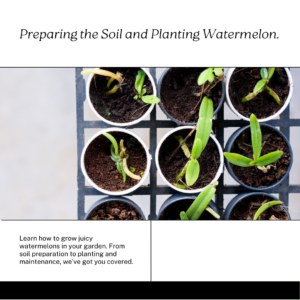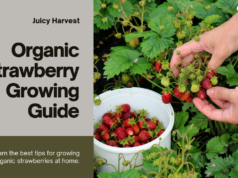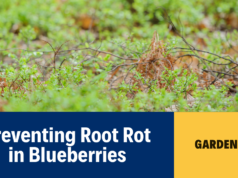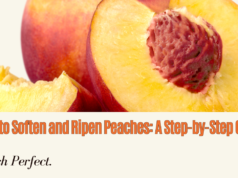
Welcome to our comprehensive guide on growing your own sweet and juicy watermelon! There’s nothing quite like biting into a perfectly ripe, refreshing watermelon on a hot summer day. In this article, we’ll provide you with expert tips and techniques to help you achieve the tastiest watermelon crop right in your own garden.
From selecting the right variety to harvesting and storing, we’ll walk you through each step of the process, ensuring that you have all the information you need for a successful watermelon-growing adventure. Whether you’re a seasoned gardener or a beginner, this guide will equip you with the knowledge to grow watermelons that are bursting with flavor and juiciness.
So if you’re ready to embark on a journey of cultivating your own homegrown watermelons, let’s dive right in and discover the secrets to growing sweet and juicy watermelon that will impress your family and friends.
Key Takeaways:
- Choosing the right watermelon variety is crucial for sweetness and juiciness.
- Proper soil preparation and planting techniques are vital for watermelon success.
- Watering and fertilizing practices play a significant role in the development of sweet and juicy watermelon.
- Managing pests and diseases is essential to maintain a healthy watermelon crop.
- Knowing when to harvest and properly store watermelons ensures the best flavor and quality.
Choosing the Right Watermelon Variety
Choosing the right watermelon variety is essential for achieving the perfect blend of sweetness and juiciness. When selecting watermelon seeds or plants, there are several factors to consider that can significantly impact the taste and quality of your harvest.
Sweetness: The sweetness of watermelon is measured by its Brix level, which indicates the sugar content. Look for varieties with a high Brix level, typically ranging from 9 to 12 or higher. These varieties tend to have exceptionally sweet and flavorful fruit.
Size: Watermelon varieties come in different sizes, ranging from small personal-sized fruits to large, heavyweight watermelons. Consider your needs and preferences when choosing the size. Smaller watermelons are great for personal consumption or small families, while larger varieties are perfect for gatherings or sharing.
Disease Resistance: Some watermelon varieties display resistance to common diseases, such as fusarium wilt or powdery mildew. Opting for disease-resistant varieties can minimize the risk of infection and help ensure a healthy crop.
By carefully selecting the best watermelon variety for your growing conditions, you’ll give yourself the best chance of enjoying sweet, juicy watermelons with every bite. Experiment with different varieties to find the one that suits your taste preferences and growing environment best.
Recommended Watermelon Varieties for Sweetness and Juiciness:
| Variety | Description |
|---|---|
| Sugar Baby | A popular heirloom variety with high sugar content. Compact size and early maturation make it ideal for smaller gardens. |
| Crimson Sweet | This classic watermelon variety is known for its deep red flesh and excellent flavor. It has a high sugar content and can grow to a large size. |
| Jubilee | With its large, oval-shaped fruit and sweet, juicy flesh, Jubilee is a favorite among watermelon enthusiasts. It is resistant to diseases and produces high yields. |
| Charleston Gray | An old-time favorite, Charleston Gray produces large watermelons with sweet, crisp flesh. It is known for its high resistance to disease. |
Remember, choosing the right watermelon variety is just the first step towards a bountiful and delicious harvest. In the next section, we’ll guide you through the essential steps of preparing the soil and planting your watermelon seeds or seedlings for optimal growth and flavor.
Preparing the Soil and Planting

Proper soil preparation is essential for growing sweet and juicy watermelon. Follow these soil preparation tips to create the optimal conditions for your watermelon plants:
- Amend the soil with organic matter: Watermelons thrive in rich, well-draining soil. Before planting, incorporate compost or well-rotted manure into the soil to enhance its fertility and moisture retention capacity.
- Ensure proper drainage: Watermelons don’t like soggy soil. Make sure your planting area has good drainage to prevent waterlogged conditions that can lead to root rot or disease. If your soil doesn’t drain well, consider creating raised beds or using raised mounds for planting.
- Choose a sunny location: Watermelons require at least 6-8 hours of direct sunlight per day. Select a spot in your garden that receives ample sunlight for optimal growth and fruit development.
Once your soil is ready, it’s time to plant your watermelon seeds or seedlings. Follow these best practices for successful planting:
- Start seeds indoors: If you live in a region with a shorter growing season, consider starting watermelon seeds indoors a few weeks before the last frost date. This will give your plants a head start and increase the chances of a successful harvest.
- Transplant seedlings carefully: If you’re using seedlings, handle them with care during transplantation to avoid damaging the delicate roots. Plant them at the same depth they were growing in the seed trays.
- Space plants properly: Watermelon plants need adequate space to spread out and receive proper airflow. Plant them 3-4 feet apart in rows with 6-8 feet spacing between rows to provide sufficient room for growth.
- Plant at the right depth: Bury the watermelon seeds or seedlings at a depth of 1 inch in the soil. This will help establish a strong root system and ensure proper nutrient uptake.
Remember to water your newly planted watermelon plants gently and keep the soil consistently moist during the germination period. As they grow, watermelon vines will appreciate regular watering to promote healthy fruit development.
Watering and Fertilizing
Proper watering techniques and fertilization are essential for the healthy growth of watermelons and the development of sweet and juicy fruit. In this section, we will explain the importance of watering and fertilizing, as well as provide expert tips to help you optimize these practices.
The Importance of Proper Watering
Watering plays a crucial role in watermelon cultivation, as it directly impacts plant growth, fruit quality, and overall yield. The key to successful watering is to provide consistent moisture without overwatering, which can lead to root rot and other issues.
Here are some tips for proper watering techniques:
- Water deeply and infrequently: Watermelons have deep root systems, so it’s important to water deeply to encourage roots to grow down. Watering deeply also helps prevent shallow root development.
- Avoid excessive moisture: Watermelons prefer well-drained soil, so it’s essential to allow the soil to dry out slightly between watering sessions. Overwatering can lead to waterlogged roots and plant stress.
- Water at the base: Direct water to the base of the plants, avoiding wetting the foliage. Wet leaves can increase the risk of disease and pest infestation.
- Use drip irrigation or a soaker hose: Drip irrigation and soaker hoses deliver water directly to the root zone, reducing water waste and minimizing leaf wetting.
Choosing the Right Fertilizer
In addition to proper watering, providing the right nutrients is essential for watermelon plants to thrive and produce sweet, juicy fruit. Choosing the right fertilizer is crucial in meeting the nutritional needs of your watermelon plants.
Here are some factors to consider when selecting a fertilizer:
- Nitrogen (N) content: Watermelon plants require a relatively high amount of nitrogen for optimal growth. Look for a fertilizer with a higher nitrogen content to promote healthy foliage development.
- Phosphorus (P) and Potassium (K) content: Phosphorus and potassium are important for fruit development and overall plant vigor. Choose a fertilizer with a balanced ratio of N-P-K, such as 5-10-10 or 10-10-10.
- Organic vs. synthetic: Organic fertilizers provide slow-release nutrients and improve soil health over time. Synthetic fertilizers, on the other hand, deliver nutrients quickly but may require more frequent applications.
It’s important to follow the manufacturer’s instructions when applying fertilizer to avoid over-fertilization, which can harm the plants.
Remember, proper watering techniques and choosing the right fertilizer are key to growing sweet and juicy watermelons. With the right care and attention, your watermelon plants will thrive, resulting in a bountiful harvest of delicious fruit.
| Fertilizer Type | N-P-K Ratio | Advantages | Disadvantages |
|---|---|---|---|
| Organic | Varies |
|
|
| Synthetic | Varies |
|
|
Managing Pests and Diseases
Watermelon plants are susceptible to various pests and diseases that can negatively impact their overall health and productivity. In this section, we will explore some common pests that affect watermelon plants and provide effective ways to prevent and treat diseases in watermelon crops, ensuring that your plants thrive.
Common Pests That Affect Watermelon Plants
When it comes to managing pests in your watermelon crop, it is important to be aware of the common culprits that can cause damage. Some of the pests that frequently affect watermelon plants include:
- 1. Aphids: These small insects feed on the plant’s sap and can transmit viral diseases.
- 2. Cucumber Beetles: These beetles both chew on the plant and transmit bacterial wilt.
- 3. Spider Mites: These tiny pests suck the sap from the leaves, causing them to dry out and turn yellow.
- 4. Squash Bugs: These bugs feed on the leaves, stems, and fruits of watermelon plants, causing damage and transmitting diseases.
By identifying these problematic pests, you can take proactive measures to prevent and control their presence in your watermelon crop.
Effective Ways to Prevent and Treat Diseases
Prevention is key when it comes to managing diseases in watermelon crops. Here are some effective strategies to help you prevent and treat diseases:
- Practice Crop Rotation: Rotating watermelon crops with non-related plants can help break the disease cycle.
- Maintain Good Hygiene: Keeping the growing area clean and removing diseased plant material can prevent the spread of diseases.
- Monitor and Scout: Regularly inspecting your plants for signs of diseases can help you take timely action.
- Use Resistant Varieties: Planting disease-resistant watermelon varieties can significantly reduce the risk of infection.
- Apply Organic Controls: Utilize organic methods such as neem oil or insecticidal soaps to control pests and diseases.
Implementing these preventive measures and promptly treating any disease outbreaks will go a long way in maintaining a healthy watermelon crop.
Harvesting and Storing Watermelon

Knowing when to harvest watermelon and how to store it properly is essential for preserving sweetness and juiciness. Follow these expert tips to ensure you enjoy the most flavorful watermelon experience.
Signs of Ripe Watermelon Ready for Harvest
It can be challenging to determine the perfect time to harvest your watermelon, but there are a few signs to look out for:
- Thumping: Give the watermelon a light tap. A ripe watermelon will produce a deep, hollow sound.
- Color: Look for a dull and matte skin surface. A shiny skin indicates an underripe watermelon.
- Yellow Spot: On the bottom of the watermelon, there should be a creamy yellow spot. This indicates it sat on the ground to ripen fully.
Tips for Proper Storage to Maintain Sweetness and Juiciness
Now that you’ve harvested your delicious watermelon, it’s crucial to store it correctly to maintain its sweetness and juiciness:
- Keep it cool: Store your watermelon in a cool location, ideally between 50-60°F (10-15°C).
- Avoid direct sunlight: Direct sunlight can cause the watermelon to become overripe and lose its flavor.
- Leave the rind intact: Do not remove the rind until just before you are ready to consume the watermelon. Leaving the rind on helps retain its freshness.
- Refrigeration: If you prefer cold watermelon, you can refrigerate it. Just make sure to wrap the cut side tightly with plastic wrap to prevent moisture loss.
FAQ
Q. How do I choose the right watermelon variety?
A. When choosing a watermelon variety, consider factors such as sweetness, size, and disease resistance. Look for varieties known for their sweetness, such as Sugar Baby or Crimson Sweet. Additionally, select varieties that are suitable for your growing conditions, whether you have limited space or a large garden.
Q. What are some tips for preparing the soil and planting watermelon?
A. To prepare the soil for watermelon, amend it with organic matter like compost or well-rotted manure to improve fertility and drainage. Ensure the soil has a pH level of 6.0 to 7.0, which is optimal for watermelon growth. When planting watermelon seeds or seedlings, space them 3 to 5 feet apart in rows, and plant them at a depth of 1 inch.
Q. How should I water and fertilize my watermelon plants?
A. Watermelon plants require consistent moisture, especially during hot and dry periods. Water deeply to encourage deep root growth and prevent issues like blossom-end rot. When it comes to fertilizing, choose a balanced fertilizer with equal amounts of nitrogen, phosphorus, and potassium. Apply the fertilizer according to the manufacturer’s instructions.
Q. What are some common pests and diseases that affect watermelon?
A. Common pests that affect watermelon plants include aphids, cucumber beetles, and squash bugs. To prevent these pests, use row covers and practice crop rotation. Diseases that can affect watermelon include powdery mildew, fusarium wilt, and anthracnose. Apply fungicides if necessary and remove infected plants to prevent the spread of disease.
Q. How can I tell when my watermelon is ready to be harvested?
A. When your watermelon is ready for harvest, it will produce a hollow sound when thumped, have a dull skin color, and the curly tendrils near the stem will dry up and turn brown. Additionally, the bottom of the watermelon (where it touches the ground) should have a yellowish spot indicating ripeness. Harvest carefully to avoid damaging the fruit.
Q. How should I store my harvested watermelon to maintain its sweetness?
A. To maintain the sweetness and juiciness of your watermelon, store it in a cool and dry place, such as a basement or refrigerator. Keep the watermelon away from ethylene-producing fruits like apples and bananas, as they can accelerate ripening. Cut watermelon should be covered and stored in the refrigerator and consumed within a few days for best flavor.
CONCLUSION
Now that you have a solid foundation for growing sweet and juicy watermelon, let’s explore additional resources and tips to help you maximize your success. Here are some valuable references that provide in-depth information and insights:
– The Watermelon Growers Handbook: A comprehensive guide covering all aspects of watermelon cultivation, from seed selection to harvest, written by renowned horticulturist Dr. Sarah Wilson.
– The Watermelon Blog: An online platform dedicated to watermelon cultivation, featuring articles, expert advice, and community forums where you can connect with fellow enthusiasts.
In addition to reference materials, having the right tools and equipment can significantly enhance your watermelon-growing journey. Here are some recommendations:
– Drip Irrigation System: Ensures consistent and efficient watering, promoting healthy root development and reducing the risk of diseases caused by overhead watering.
– Mulch: Helps regulate soil temperature, conserves moisture, and suppresses weed growth, creating optimal growing conditions for your watermelon plants.
Finally, here are a few additional techniques to consider:
– Pruning: Removing excessive foliage and lateral vines can redirect plant energy towards fruit production, resulting in larger and sweeter watermelons.
– Pollination Enhancement: Hand pollination or attracting pollinators like bees can increase fruit set and improve overall yield.
By utilizing these resources, tools, and techniques, you’ll be equipped with the knowledge and strategies needed for thriving watermelon cultivation. Happy growing!
















